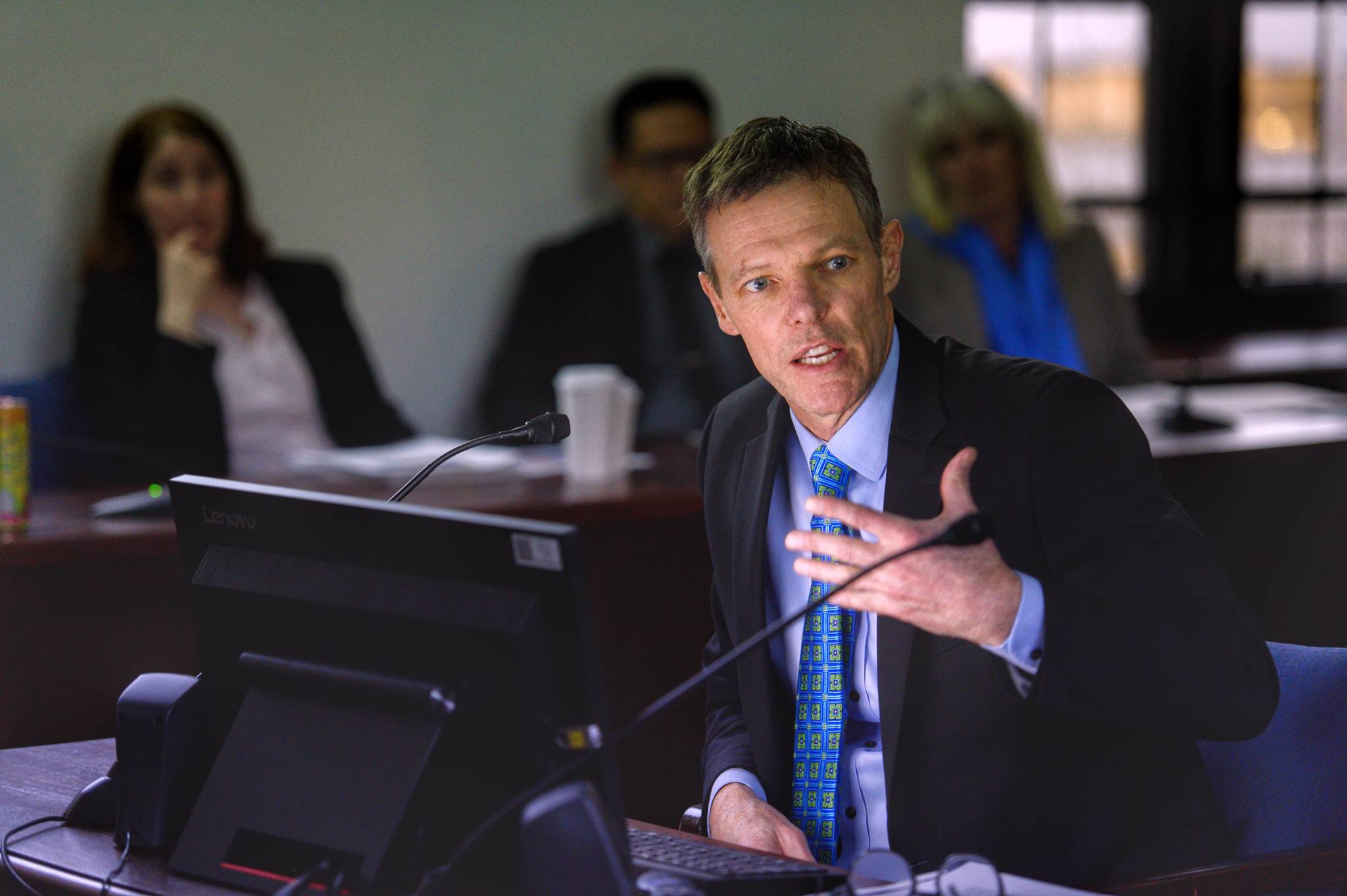Correction: An earlier version of this article erroneously stated that Alaska’s population has declined by 35,000 people over the past six years. In the past six years, 35,000 fewer people have migrated to Alaska than people have migrated out, which is different from an overall population drop. The article has been changed to reflect that.
Alaska has lost jobs for 39 straight months, but that streak could come to an end this year.
Dan Robinson, the chief of research and analysis for the Alaska Department of Labor and Workforce Development, said the department expects “modest growth” this year. After statewide job losses of 1.6 percent, 1.3 percent and 0.7 percent in 2016, 2017 and 2018, respectively, the Department of Labor forecasts the number of jobs will increase by about 0.4 percent in 2019, according to Robinson’s presentation.
Oil and gas jobs have been hit the hardest during the recession — which started in October 2015 — Robinson said. During that stretch, that sector has lost 4,900 jobs, according to his presentation.
After such a dramatic downturn, Robinson said after the presentation, the oil and gas industry is due for a rebound.
“Oil and gas moves less predictably than other sectors,” Robinson said, “but generally after a big loss you’re a little more likely to resume growth, and that’s some of what we’re seeing.”
Construction jobs are expected to rise the most — 5.8 percent — according to the Department of Labor and Workforce Development’s Alaska Economic Trends publication.
Fairbanks is poised for a boost, as two squadrons of F-35 fighter jets are going to be based there. According to a report from KUAC in Fairbanks, the placement of jets in Fairbanks is expected to bring about 5,000 people there.
In reference to Southeast in particular, Robinson said the main area of growth will be from tourism.
“Right now, nationally especially, it’s a strong economy,” Robinson said. “Interest in Alaska is high. We’ve got all those new ships coming on, so tourism’s going to be the biggest plus for Southeast.”
[Number of cruise visitors expected to leap in 2019]
State jobs are still projected to decrease in Southeast, according to numbers from Rain Coast Data presented in November. Jobs and earnings increased in Southeast in 2017, but in Juneau there were decreases of 200 jobs (1.1 percent), $9 million in earnings (1 percent), and 450 people (1.4 percent), according to Rain Coast Data and Southeast Conference.
Though it started off with good news, the majority of Robinson’s presentation was looking at the dismal few years for Alaska’s job market and population.
Alaska’s recession has lasted longer than most, Robinson said. Ninety-three percent of state recessions last under three years, he said, and Alaska just passed the three-year mark. While other oil-producing states (such as Wyoming and North Dakota) have suffered similar downturns, they have rebounded while Alaska’s recession has lingered. Alaska is even more dependent on oil because unlike those other states, Robinson said, Alaska has historically funded its state government with oil revenues. The state is in the process of changing how it’s funding state government in an attempt to become less reliant on oil.
In the past six years, 35,000 fewer people have migrated to Alaska than people have migrated out, according to Robinson’s presentation. This was done through measuring in-migration versus out-migration. Though Alaska’s recession in the 1980s was much worse, Robinson says it’s notable that this loss has happened six years in a row. That’s never happened in Alaska as long as records have been kept, he said.
Robinson said there hasn’t been a huge increase in people leaving the state, but the number of people moving to the state has decreased in recent years. Whatever the cause, fewer people is a bad indicator for a state’s job market, he said.
“Population loss and economic vitality rarely go hand-in-hand,” Robinson said.
• Contact reporter Alex McCarthy at 523-2271 or amccarthy@juneauempire.com. Follow him on Twitter at @akmccarthy.

